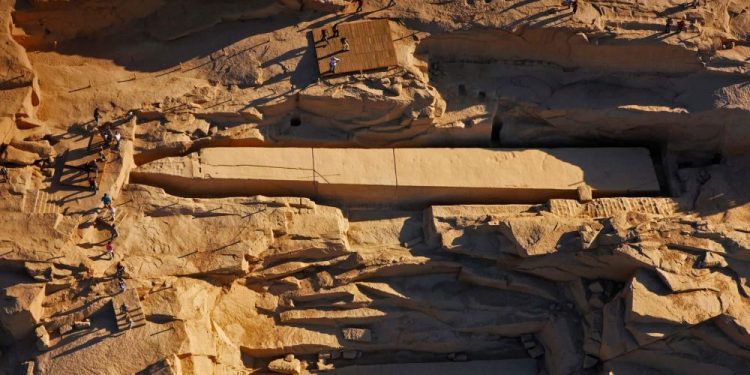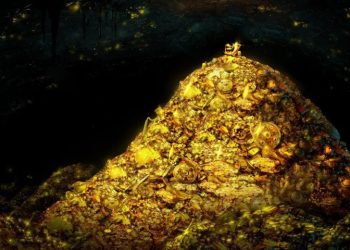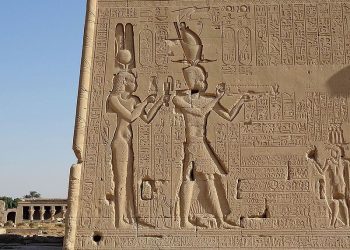For centuries, limestone and sandstone dominated as the primary building materials of ancient Egypt. However, as Egyptian quarrying techniques evolved, they turned their attention to more challenging materials like granite. Its durability and resilience made granite an ideal choice for monuments and obelisks, symbols meant to endure through the ages. Eventually, granite rose to prominence, becoming the third most commonly quarried material in Ancient Egypt, following closely behind limestone and sandstone.
The city of Aswan, located more than 900 miles south of Giza, was the epicenter of granite quarrying in ancient Egypt. The transportation of this heavy stone over such vast distances remains one of the most intriguing puzzles of the ancient world.
Let’s explore further how the Egyptians mastered the art of quarrying granite:
- Initially, granite quarrying in Ancient Egypt was accomplished using stone pounders, a testament to the early Egyptians’ ingenuity.
- These early pounders were crafted from a tough stone called dolerite, chosen for its durability and effectiveness.
- As quarrying techniques advanced, two-handed stone hammers were developed, enabling workers to more precisely shape the edges of the excavated blocks.
- For a significant period, these methods were considered the primary way early Egyptians shaped stones for their monumental constructions.
- During the Dynastic Period, Egyptians began using a combination of fire and water to weaken stone surfaces, an innovative approach that eased the quarrying process.
- Workers employed copper or bronze tools, inserted into natural cracks in the stone, to further widen and separate the stone more efficiently.
- Wooden levers and splinters played a crucial role in detaching large stone blocks from their natural bedrock.
- The introduction of iron tools around the 26th Dynasty marked a significant advancement, replacing the more primitive methods previously used.
- These iron tools included chisels, wedges, sledgehammers, and picks, each serving a specific purpose in the quarrying process.
- Among these, the chisel emerged as the most indispensable tool in the Egyptians’ quarrying arsenal, revolutionizing their ability to extract and shape stone.
Granite quarrying in ancient Egypt began in the most ancient periods of Egyptian civilization, but its extraction was extremely difficult with the presence of simple tools made again of stone.
Imagine that most of the spectacular ancient Egyptian monuments were built in the early dynastic period, and more advanced tools appeared almost at its end.
The extraction of granite began in the late pre-dynastic era or the beginning of Egyptian civilization, and the first iron tools for stone mining appeared around the 7th century BC.
And so, the early quarrying techniques involved pounding the base of the stone blocks in order to separate them into large pieces. This was done on hand using nothing but stone hammers made from dolerite. Hammers made from other similar materials have been discovered but dolerite was the predominant stone used.
Of course, the highest quality stone is never the one you see on the surface. In order to get to the deeper stone that was of the necessary quality, ancient Egyptians found a way to soften the stone using large fires. When the time came, they threw cold water on top of the glowing granite, thus, causing the first layers to crack and be easier to penetrate.
As you can see, ancient Egyptians knew a thing or two of simple chemistry although they likely did not see it this way.
Imagine how much the workers’ lives changed after the introduction of iron tools. The most significant invention – the chisel, should have made granite quarrying in ancient Egypt and the shaping of the blocks unimaginably easier than using hand-held stone tools. Moreover, chisels remain as useful to this day and are a mandatory tool for builders and construction workers in our modern world.
Join the discussion and participate in awesome giveaways in our mobile Telegram group. Join Curiosmos on Telegram Today. t.me/Curiosmos











